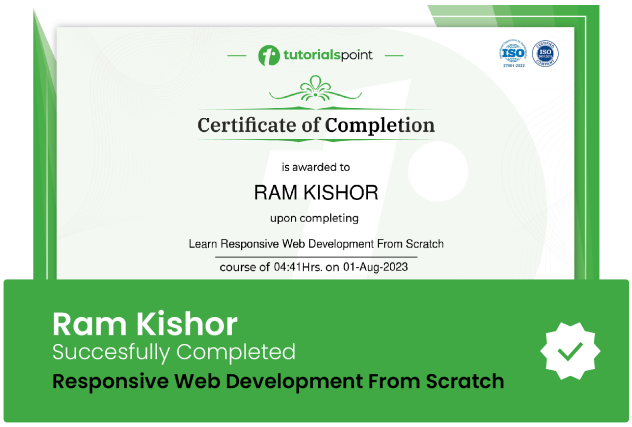Basic Principles of Organic Chemistry
Simply Easy Learning

Lectures -76
Duration -5 hours

Get your team access to 10000+ top Tutorials Point courses anytime, anywhere.
Course Description
Organic Chemistry is one of the most important branches of Chemistry. Organic compounds can be found all around us and its applications have profound impact on human life and environment. Hence, it is imperative to understand the basic principles that govern various organic reactions, its mechanisms, reactive intermediates and products. In this chapter, important concepts like structure and classification of organic compounds, IUPAC nomenclature, electronic displacement effects, types of organic reactions and methods of purification of organic compounds will be discussed.
Audience
This video has been prepared to address the curriculum requirements of 11th Class students. The concepts discussed will also find applications in several competitive examinations like JEE-Mains, NEET along with board examinations.

Curriculum
Check out the detailed breakdown of what’s inside the course
Organic Chemistry
7 Lectures
-
Organic Chemistry - Introduction 05:29 05:29
-
Organic Chemistry - Carbon Electronic Structure 03:02 03:02
-
Organic Chemistry - Carbon Hybridization 08:25 08:25
-
Organic Chemistry - Hybridization Examples 03:11 03:11
-
Hybridization Bond Length and Bond Strength 04:02 04:02
-
Organic Chemistry - Structural Representations 03:05 03:05
-
Organic Chemistry - Classification of Organic Compounds 02:24 02:24
IUPAC Nomenclature
10 Lectures

Isomerism
3 Lectures

Electronic Displacement Effects
9 Lectures

Heterolytic and Heterolytic Cleavage
5 Lectures

Nucleophiles & Electrophiles
2 Lectures

Types of Organic Reactions
6 Lectures

Purification Techniques
5 Lectures

Qualitative Analysis of C, H, N, O
8 Lectures

Quantitative Analysis of Organic Compounds
10 Lectures

Problems on Basic Principles of Organic Chemistry
10 Lectures

Instructor Details

Tutorialspoint
Simply Easy Learning
Tutorials Point originated from the idea that there exists a class of readers who respond better to online content and prefer to learn new skills at their own pace from the comforts of their drawing rooms.
The journey commenced with a single tutorial on HTML in 2006 and elated by the response it generated, we worked our way to adding fresh tutorials to our repository which now proudly flaunts a wealth of tutorials and allied articles on topics ranging from programming languages to web designing to academics and much more.
40 million readers read 100 million pages every month
Our Text Library Content and resources are freely available and we prefer to keep it that way to encourage our readers acquire as many skills as they would like to. We don't force our readers to sign up with us or submit their details either to use our Free Text Tutorials Library. No preconditions and no impediments, Just Simply Easy Learning!
We have established a Digital Content Marketplace to sell Video Courses and eBooks at a very nominal cost. You will have to register with us to avail these premium services.
Course Certificate
Use your certificate to make a career change or to advance in your current career.

Our students work
with the Best


































Related Video Courses
View MoreAnnual Membership
Become a valued member of Tutorials Point and enjoy unlimited access to our vast library of top-rated Video Courses
Subscribe now
Online Certifications
Master prominent technologies at full length and become a valued certified professional.
Explore Now


 Updated on Apr, 2024
Updated on Apr, 2024
 Language - English
Language - English